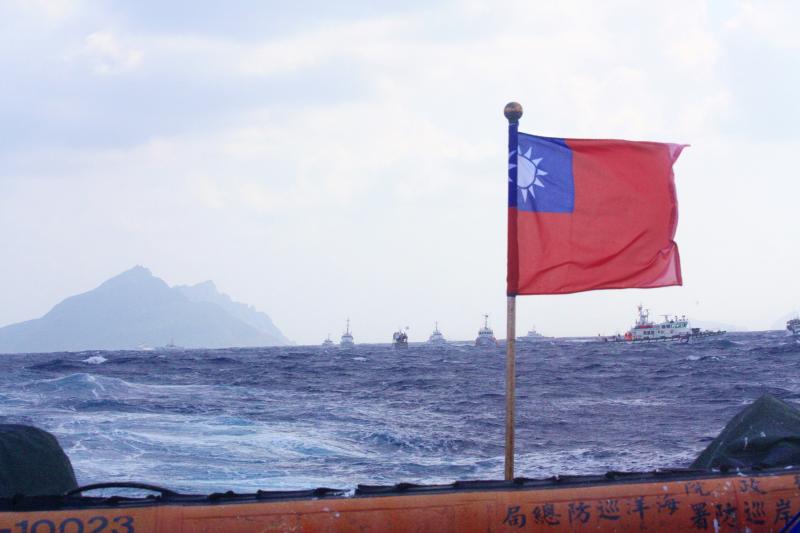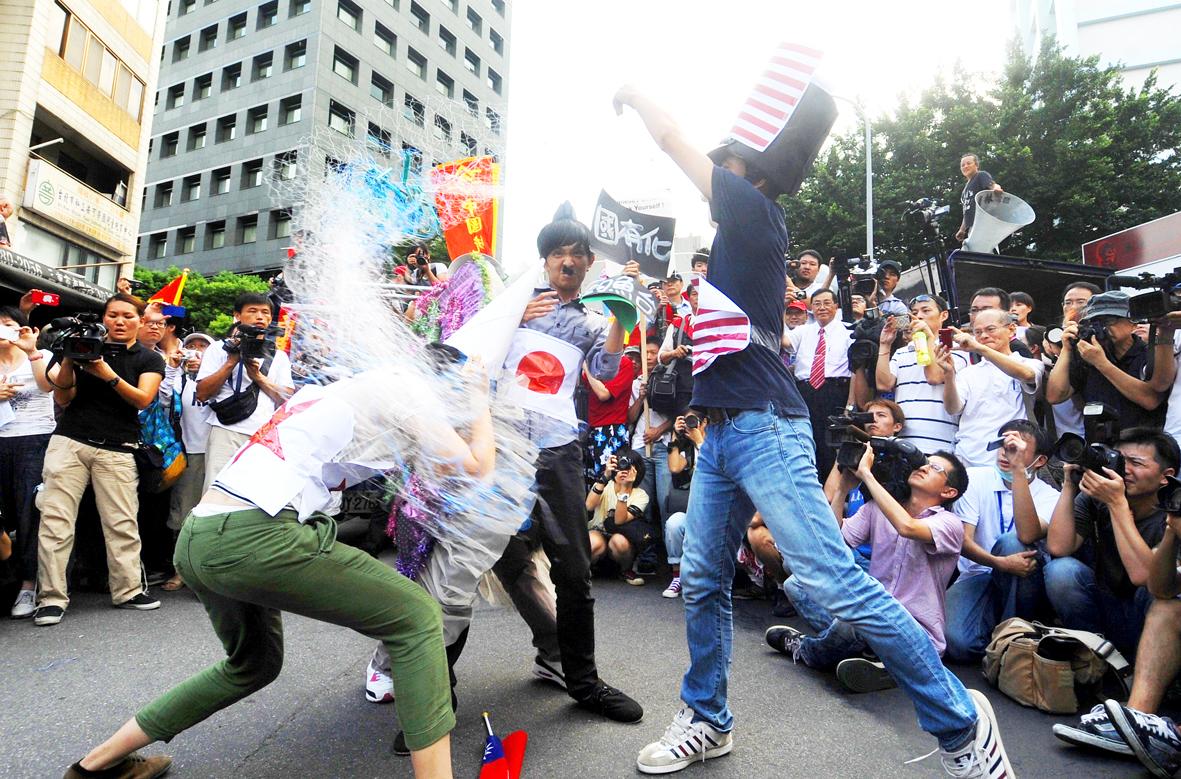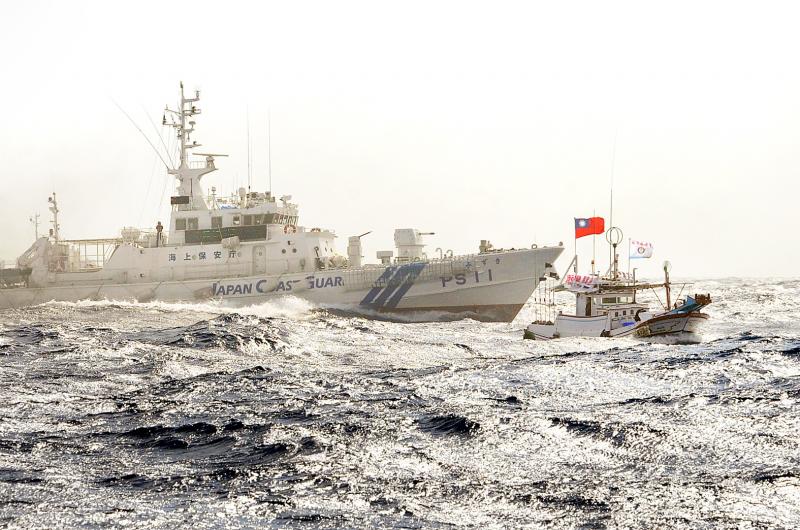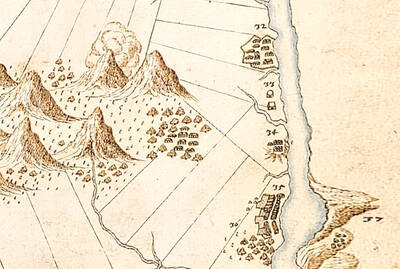Otto von Bismarck once famously remarked that the “great European war will come out of some damn foolish thing in the Balkans.” We may have inched closer to that damn foolish thing in recent weeks.
On Feb. 1, a new law came into effect in China, which codified Beijing’s claim that its well-armed Coast Guard could remove vessels in its waters “illegally” and use force against them if necessary. This is no more or less a “law” than any other law administrated by the Chinese Communist Party (CCP), since Beijing could use its Coast Guard to attack vessels from other nations any time it wanted to, without any such law. It is merely another way Beijing legitimates the conflict it seeks to its own people, always a problem for authoritarian states.
However, it does signal the increasing seriousness of China’s expansion into its neighbor’s territories. Although Taiwan is often identified as a major flashpoint, and there is much handwringing about US freedom of navigation operations in the South China Sea — a pavane whose steps are understood by all involved — the Diaoyutai Islands (釣魚台) — known as the Senkaku Islands in Japan — are the only place in which armed vessels of China and Japan are frequently in dangerous and turbulent proximity to each other.

Photo: Chiang Chih-hsiung, Taipei Times,
The islands have been Japanese territory since Tokyo claimed them in the 1890s. Prior to that they had been uninhabited rocks belonging to no nation. In the late 1960s, a survey suggested the possibility of oil beneath them, and suddenly both governments of China — the Republic of China (ROC) on Taiwan and the People’s Republic of China (PRC) — discovered that the little cluster of islands had been Chinese since the Neolithic period.
The PRC and ROC governments then hastily reinvented their history and redid all their official maps in the best “Oceania has always been at war with East Asia” style. On previous maps both governments had always recognized the Senkakus as part of the Ryukyus and labeled them by their Japanese name. For the droll story of the ROC’s rapid rewrite, see Yap et al’s “The Diaoyutai Islands on Taiwan’s Official Maps: Pre- and Post-1971” (Asian Affairs: An American Review, 39:90–105, 2012).
The PRC, by contrast, removed tens of thousands of maps from its public institutions and issued new maps. The Chinese “historical claim,” which Ma Ying-jeou (馬英九) aligned the ROC with when he was president, is utterly false. China’s claim on the Senkakus is simply naked territorial expansion, rife with the possibility of war.

Photo: Peter Lo, Taipei Times
The US addressed the island mess on Tuesday, demanding that China stop sending ships into the waters around the Senkaku Islands. The Pentagon press secretary said: “We hold with the international community about the Senkakus and the sovereignty of the Senkakus and we support Japan obviously in that sovereignty…”
Unnamed sources within the US Department of Defense quickly corrected this by restating the usual US position, which is that the US takes no position on sovereignty disputes.
These are pretty words, but when the US returned Okinawa to Japan in 1972 it explicitly included the Senkakus, and that has been the US position ever since. In fact the US has stated repeatedly over the intervening years that the Senkakus fall under the US-Japan mutual defense treaty — in other words, that the US would certainly intervene if the Chinese attempted to seize them since they are part of Japan. Secretary of State Antony Blinken most recently reiterated that position just this month.

Photo: Fang Pin-chao, Taipei Times
On Thursday, Tokyo saw Beijing and raised: ruling party members announced that government officials had changed their interpretation of existing laws and would permit Japanese Coast Guard vessels to fire on official vessels of a foreign power attempting to land on the Senkakus. This ruling, it should be noted, specifically excludes the hare-brained stunts that we have seen on and off over the years, in which Chinese and Japanese nationalists attempt to land on the island in small craft, spiking tensions.
Consider: Tokyo last year recorded 333 incursions by Chinese vessels into Japanese waters around the islands, including one stretch of 111 days in which Chinese vessels remained nearby to harass Japanese fishing vessels.
With both Chinese and Japanese Coast Guard ships now authorized to shoot, and Chinese incursions a regular feature in the Senkakus, each year brings scores of opportunities for some damn foolish thing to lead to shooting and then to war. Unlike the ambiguous US position on Taiwan, Washington is committed by treaty to defend Tokyo in the event of war.
The terrain may be watery, but it is a powder keg.
Amidst all this Great Power hullabaloo, the government of President Tsai Ing-wen (蔡英文) quietly reiterated ROC sovereignty over the islands. Tsai has managed to keep the Senkaku issue from becoming a serious problem by making milquetoast assertions of ROC sovereignty. The reason for that is due in part to domestic politics: these islands have important political functions for the Chinese Nationalist Party (KMT): they are exploited as irritants to harm relations with Japan.
Readers may recall that in September 2012, then-president Ma, who wrote his thesis on how China owns the Senkakus, dispatched a dozen Coast Guard vessels to escort 60 fishing boats to the islands, and gave every appearance of coordinating ROC actions with those of the PRC. US officials were officially miffed to discover that the US had sold some of the weapons systems aboard those vessels.
That same year the local military wore patches during exercises that said “The Diaoyutais are ours!” It is not a coincidence that the KMT constantly accuses Tsai of being soft on sovereignty whenever the island is makes the news — it wants to push the Tsai government to take a harder position and annoy Japan.
In addition to irritating relations with Japan, the island claims of ROC die-hards have another purpose: to get both Taiwanese and outsiders to treat them as a “Taiwanese claim,” blurring the lines between what is the ROC’s and what is Taiwan. The KMT markets the island claims to a domestic audience, hoping that locals will start thinking of the Senkakus as “theirs” and identify with the ROC.
This strategy is also aimed at the international media, which is generally too lazy to distinguish between the ROC and Taiwan (though they always have plenty of words to waste describing how China claims Taiwan).
“Taiwan claims several islands in the South China Sea” or “Taiwan claims the Senkakus” are commonplaces in news articles, though “Taiwan” does no such thing — it is the ROC which makes these claims.
If the recent Chinese incursions into Indian and Bhutanese territory in the Himalaya are any guide, what we will see is China attempting its usual “salami slicing” little-by-little incursions with swarms of Coast Guard vessels and fishing craft, moving to the brink of a shooting war, then backing down and talking, then cycling that back up again. Each time that activity crests, we risk a shooting war that Washington has bound itself to intervene in.
The Senkaku issue illuminates important cleavages between the KMT and Tsai’s Democratic Progressive Party (DPP) in their approaches to Washington and Tokyo. As with so many other policy domains, the Tsai administration has engaged in practical and levelheaded management of the Senkaku migraine, in contrast to Ma’s hyping of tensions with Japan and dramatic, fantastical territorial claims.
US policymakers should contemplate the starkly different KMT and DPP thinking on the Senkakus, and act accordingly. With the likelihood of war rising wherever China has frontiers, Washington needs to work to ensure that the party that takes power in Taipei in 2024 is not one that aligns itself with Chinese territorial claims, and foments trouble with Washington’s allies.
It’s never too soon, Washington, to think about where you want to be when the shooting starts.
Notes from Central Taiwan is a column written by long-term resident Michael Turton, who provides incisive commentary informed by three decades of living in and writing about his adoptive country.

The Nuremberg trials have inspired filmmakers before, from Stanley Kramer’s 1961 drama to the 2000 television miniseries with Alec Baldwin and Brian Cox. But for the latest take, Nuremberg, writer-director James Vanderbilt focuses on a lesser-known figure: The US Army psychiatrist Douglas Kelley, who after the war was assigned to supervise and evaluate captured Nazi leaders to ensure they were fit for trial (and also keep them alive). But his is a name that had been largely forgotten: He wasn’t even a character in the miniseries. Kelley, portrayed in the film by Rami Malek, was an ambitious sort who saw in

Last week gave us the droll little comedy of People’s Republic of China’s (PRC) consul general in Osaka posting a threat on X in response to Japanese Prime Minister Sanae Takaichi saying to the Diet that a Chinese attack on Taiwan may be an “existential threat” to Japan. That would allow Japanese Self Defence Forces to respond militarily. The PRC representative then said that if a “filthy neck sticks itself in uninvited, we will cut it off without a moment’s hesitation. Are you prepared for that?” This was widely, and probably deliberately, construed as a threat to behead Takaichi, though it

Among the Nazis who were prosecuted during the Nuremberg trials in 1945 and 1946 was Hitler’s second-in-command, Hermann Goring. Less widely known, though, is the involvement of the US psychiatrist Douglas Kelley, who spent more than 80 hours interviewing and assessing Goring and 21 other Nazi officials prior to the trials. As described in Jack El-Hai’s 2013 book The Nazi and the Psychiatrist, Kelley was charmed by Goring but also haunted by his own conclusion that the Nazis’ atrocities were not specific to that time and place or to those people: they could in fact happen anywhere. He was ultimately

Nov. 17 to Nov. 23 When Kanori Ino surveyed Taipei’s Indigenous settlements in 1896, he found a culture that was fading. Although there was still a “clear line of distinction” between the Ketagalan people and the neighboring Han settlers that had been arriving over the previous 200 years, the former had largely adopted the customs and language of the latter. “Fortunately, some elders still remember their past customs and language. But if we do not hurry and record them now, future researchers will have nothing left but to weep amid the ruins of Indigenous settlements,” he wrote in the Journal of